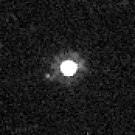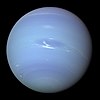Interstellar Express
This article needs additional citations for verification. (April 2021) |
| Mission type | Heliosphere science, planetary flyby |
|---|---|
| Operator | Chinese National Space Administration |
| Mission duration | 25 years (planned) |
| Start of mission | |
| Launch date | Proposed: May 2024[1][2] |
| Flyby of Earth (gravity assist) | |
| Closest approach | October 2025 [2] |
| Flyby of Earth (gravity assist) | |
| Closest approach | December 2027 [2] |
| Flyby of Jupiter | |
| Closest approach | March 2029 [2] |
| Flyby of 50000 Quaoar | |
| Closest approach | TBD [1][3] |
| Distance | TBD |
| Mission type | Heliosphere science, planetary flyby |
|---|---|
| Operator | Chinese National Space Administration |
| Mission duration | 25 years (planned) |
| Start of mission | |
| Launch date | Proposed: May 2024-2026[1][4] |
| Flyby of Earth (gravity assist) | |
| Closest approach | May 2027 [2] |
| Flyby of Earth (gravity assist) | |
| Closest approach | March 2032 [2] |
| Flyby of Jupiter | |
| Closest approach | May 2033 [2] |
| Flyby of Neptune | |
| Closest approach | January 2038 [2] |
| Distance | 1,000 km |
| Flyby of Kuiper belt object (TBD) | |
| Closest approach | TBD [2] |
| Distance | TBD |
Interstellar Express or Interstellar Heliosphere Probe is the current name for a proposed Chinese National Space Administration program designed to explore the heliosphere and interstellar space.[3] The program will feature two space probes that will be launched in 2024 and follow differing trajectories to encounter Jupiter to assist them out of the Solar System. The first probe, IHP-1, will travel toward the nose of the heliosphere, while the second probe, IHP-2, will fly near to the tail, skimming by Neptune and Triton in January 2038.[5][2] There may be another probe—tentatively IHP-3—which would launch in 2030 to explore to the northern half of the heliosphere.[1][6] IHP-1 and IHP-2 would be the sixth and seventh spacecraft to leave the Solar System, as well as first non-NASA probes to achieve this status.
History[]
The heliosphere and the interstellar medium have so far been explored by only three NASA probes: Voyager 1, Voyager 2, and New Horizons. Both Voyagers used gravity assists to take them out of the plane of the ecliptic: Voyager 1 to the north with Saturn in 1980, and Voyager 2 to the south with Neptune in 1989; New Horizons designed to stay within the plane to allow for exploration of other Kuiper belt objects. However, none of these probes are exploring the tail of the heliosphere; Pioneer 10, which was headed toward the tail after its Jupiter flyby in 1973, lost contact with Earth in 2003. Later spacecraft which would remain within the Solar System, such as Cassini-Huygens, have gathered valuable data on the heliosphere and how it interacts with the interstellar medium, suggesting that the heliosphere is not shaped like a comet but is rather spherical.
Overview[]
Each probe is to weigh about 200 kilograms, to use radioisotope thermoelectric generators for power, and to carry 50 kilograms or more of scientific instruments such as optical cameras, magnetometers, dust detectors, and neutral atom and particle payloads.[1][3][2] They will also study anomalous cosmic rays, interplanetary dust, and the interstellar medium.[5] Depending on whether monopropellant or ion propulsion is used, the probes would be launched using either Long March 3B or Long March 5 rockets.[3][1] While IHP-1 and IHP-2 will use RTGs for power, IHP-3, if approved, would use a nuclear reactor.[1][6]
50000 Quaoar and its moon Weywot are currently being considered as potential flyby targets for IHP-1.[2][1] Centaur exploration has also been considered for both probes.[1][5]
Trajectory[]
The goal of the spacecraft is to reach 100 astronomical units by 2049, which is the centennial celebration of the People's Republic of China's founding.[3][2]
IHP-1 will launch in May 2024. In October 2025 it will return to Earth for a gravity assist, then loop back in December 2027 for yet another gravity assist. In March 2029 the probe will fly by Jupiter to send it on a trajectory toward the nose of the heliosphere and potentially make observations of centaurs or Kuiper belt objects, including the flyby of Quaoar, along the way.[1] By 2049 the probe will be 85 AU away from the Sun.

IHP-2 will launch in May 2024 or 2025, but it will likewise receive two gravity assists from Earth in May 2027 and March 2032 respectively. The flyby of Jupiter in May 2033 will send it on a path to fly by Neptune in January 2038 at only 1,000 kilometers above its cloud tops. The probe may also release an atmospheric impactor prior to the flyby.[3] After the flybys, the probe will visit a Kuiper belt object, and by 2049 the probe will have traveled 83 AU away from the Sun, heading toward the yet-unexplored tail of the heliosphere.
Flyby targets[]
IHP-1[]

Earth (2x gravity assist)

Jupiter (flyby)

Quaoar and Weywot (flyby)
IHP-2[]

Earth (2x gravity assist)

Jupiter (flyby)

Neptune (flyby)

Triton (flyby)
See also[]
- Gan De, a Chinese proposal for a Jupiter orbiter to launch in 2029 that may include a component to fly by Uranus.
- Interstellar, a concept by NASA to explore the heliosphere to be launched sometime in 2030.
- Voyager 1 and 2, probes by NASA designed to explore the outer planets that have since passed the boundary between the heliosphere and interstellar space.
- Trident, a concept by NASA to explore Neptune and Triton, which would have been launched in 2025 on a trajectory to reach Triton in mid-2038.
- Neptune Odyssey, a concept by NASA designed to orbit Neptune and Triton that may carry an atmospheric probe as part of its cargo.
References[]
- ^ a b c d e f g h i j Wu, Weiren; Yu, Dengyun; Huang, Jiangchuan; Zong, Qiugang; Wang, Chi; Yu, Guobin; He, Rongwei; Wang, Qian; Kang, Yan; Meng, Linzhi; Wu, Ke; He, Jiansen; Li, Hui (2019-01-09). "Exploring the solar system boundary". SCIENTIA SINICA Informationis. 49 (1): 1. doi:10.1360/N112018-00273. ISSN 2095-9486.
- ^ a b c d e f g h i j k l m Jones, Andrew (November 19, 2019). "China Considers Voyager-like Mission to Interstellar Space". Planetary.org. The Planetary Society. Retrieved 29 April 2021.
- ^ a b c d e f Jones, Andrew (16 April 2021). "China to launch a pair of spacecraft towards the edge of the solar system". SpaceNews. SpaceNews. Retrieved 29 April 2021.
- ^ Shim, Chang-seop. "중국, 인터스텔라 탐사에 나설까 – Sciencetimes" (in ko-KR). Retrieved 25 June 2021.
{{cite news}}: CS1 maint: unrecognized language (link) - ^ a b c Wang, Chi; Li, Hui; Guo, Xiaocheng; Xu, Xinfeng (2021-01-27). "太阳系边际探测项目的科学问题". 深空探测学报(中英文) (in Chinese). 7 (6): 517–524. doi:10.15982/j.issn.2096-9287.2020.20200058. ISSN 2096-9287. Retrieved 1 July 2021.
- ^ a b Song, Jianlan. ""Interstellar Express": A Possible Successor of Voyagers". InFocus. Chinese Academy of Sciences. Retrieved 29 April 2021.
External links[]
- Chinese space probes
- Proposed space probes
- Missions to Jupiter
- Missions to Neptune
- Missions to minor planets










